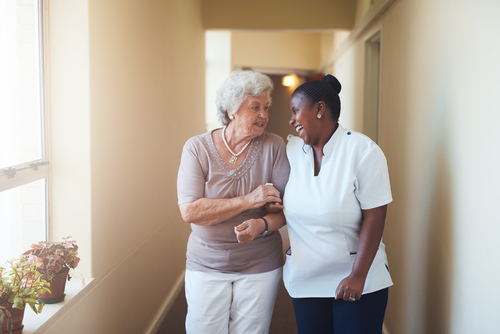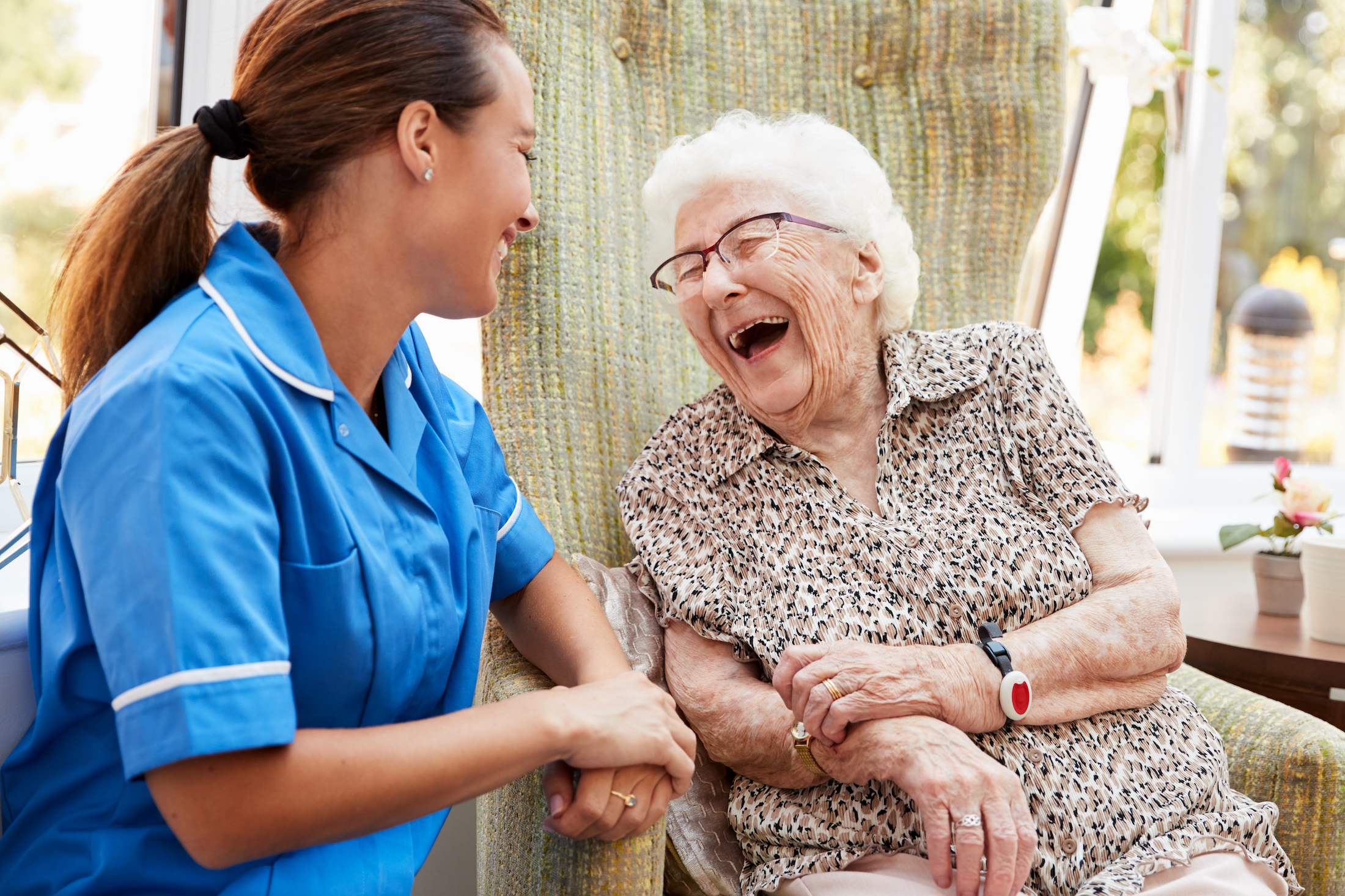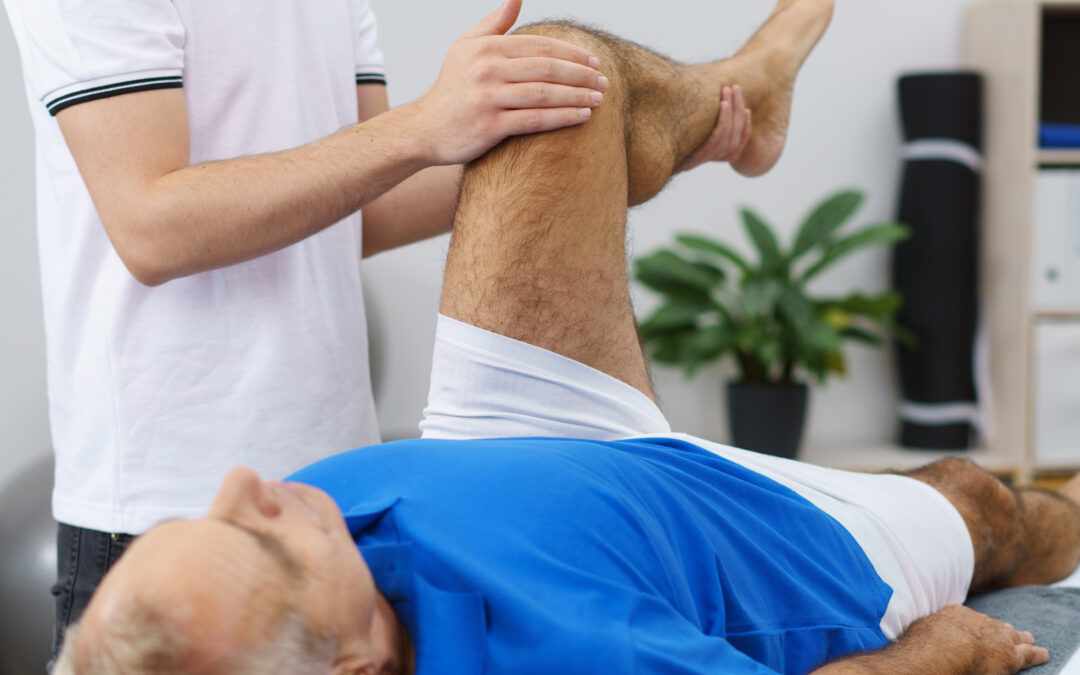
by Odom Rehab | Apr 12, 2022 | News
One of the reasons I’m so passionate about what we do for seniors at Odom Rehab is that we have evidence that our efforts work. Industry statistics demonstrate that our clinical model results in a 35% reduction in hospitalizations for senior living residents.
We conduct an audit twice a year with the residents that live in the buildings of one of our partner communities. The report captures the clinical outcomes achieved. What gets me excited is that the Improvements in these measures are directly correlated with reductions in hospitalizations and community move-outs.
We tracked the progress of 1149 residents in 28 communities. Below are the average improvements measured between July 1, 2021 and December 31, 2021:
Functional Mobility: ↑ 24.3.%
Balance: ↑ 25.2%
Pain: ↑ 36.9%
Gait Speed: ↑ 34.9%
Strength: ↑ 25.2%
Transfer Independence: ↑ 33.6%
ADL Independence: ↑ 17.6%
We determined our findings by comparing documentation from a resident’s initial evaluation with documentation from when the resident completed therapy services. For example, to quantify balance improvement we use the Tinetti Balance and Gait assessment, which evaluates the quality of gait and balance deficits with very high inter-rater reliability. We look at additional objective data like this to capture all the outcomes in the report.
We are always looking for new senior housing providers with whom we can partner to capture and report data that demonstrates the value of both the Odom Rehab model and the community as a whole. It is my sincere belief that sharing this kind of data is a fundamental responsibility of a therapy partner as it allows the community to tell a compelling story to prospective residents, adult children and referral sources about the potential to improve independence after moving into the community.
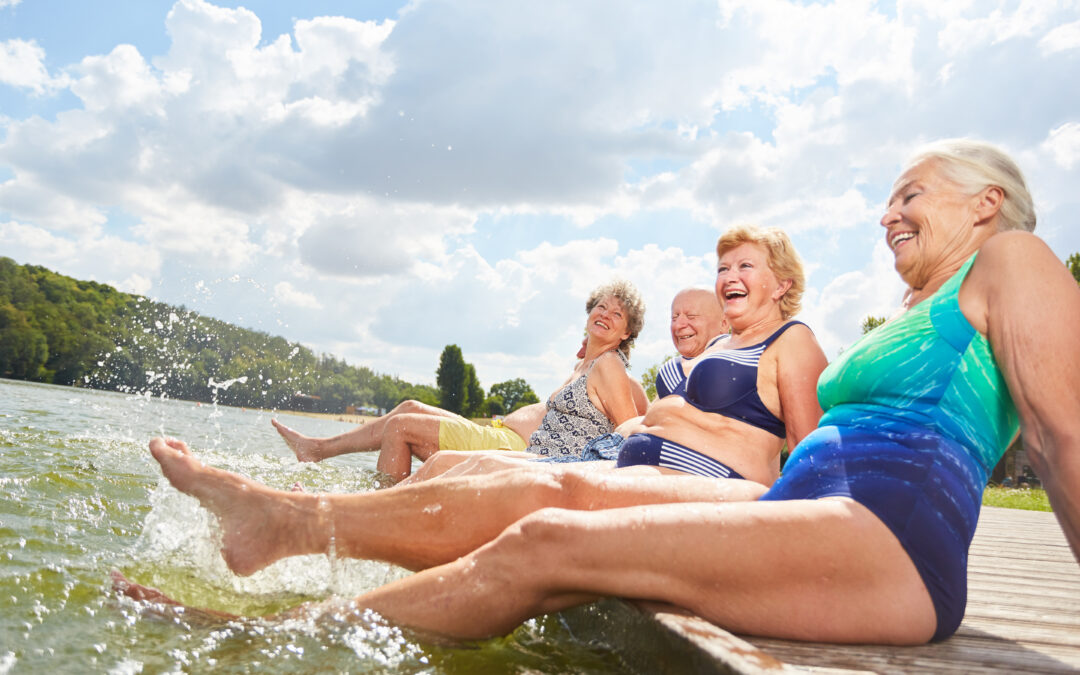
by Odom Rehab | Mar 22, 2022 | News
Many seniors may overestimate or overstate their “independence” and “physical activity.” As they age their expectations for independence and physical activity may change. This willingness to be content with decreased mobility, strength and overall independence with activities of daily living can make it more difficult to get them to participate in therapy and other physical engagement opportunities that are proven to reduce injuries – especially from falls – and enjoy their lives even more.
Last month I referenced a fascinating article giving insights about misperceptions seniors have about their ability to become stronger and, as a result, reduce fall risk. The study was published by the Academy of Geriatric Physical Therapy (APTA) titled Older Adults’Perceptions Regarding the Role of Physical Therapists in Fall Prevention, A Qualitative Investigation (Journal of Geriatric Physical Therapy, March 23, 2021).
The report gives the example of participants who considered themselves independent and valued that independence. But often they were being cared for in a facility or by a caregiver. Their view of independence was focused on maintaining their current level of functioning – not on how high or low that functioning was.
Participants thought of “physically active” as being able to do the activities of simple daily functioning. When researchers asked, “What first comes to mind when you think about being physically active, or staying physically fit?” A typical response was, “Well, being able to get out of bed, being able to dress myself, being able to feed myself, and being able to function in the way that most of us do or want to.” Going for walks, dancing, exercise routines or participating in sports they once enjoyed were notably absent from the responses
Those of us in the public health field know that the lives of seniors can be so rich in regards to the activities? in which they choose to participate. The analysis of these interviews revealed just one primary difference between those who participated in one of the fall preventions programs and those who did not. Those who participated expressed that they “needed” the program, those who did not participate expressed a lack of need.
Lack of transportation was another significant barrier referenced in the study. Needing to go somewhere for therapy makes it just that much harder to do.
As I mentioned last month, all of us in the public health sector who work with seniors need to evangelize and educate about what can be done. Falls are one of the biggest fears that seniors have and that fear is a key indicator for predicting a fall but there seems to be a gap between that concern and understanding that they can do something to reduce the risk – becoming independent and physically active. I believe two of the biggest reasons for this gap are understanding and access.
At Odom we’re trying to do something about this by partnering with Senior Living Communities. We work with the staff to provide information, helping residents understand what “independent” and “physically” active can really mean for them. We also work on site, eliminating the need to find transportation and taking time to get ready. We’re happy to say that our data indicates our Senior Living clients show impressive improvement in functional mobility, balance, pain, gait speed, strength, transfer independence, and ADL independence. More about this next month.
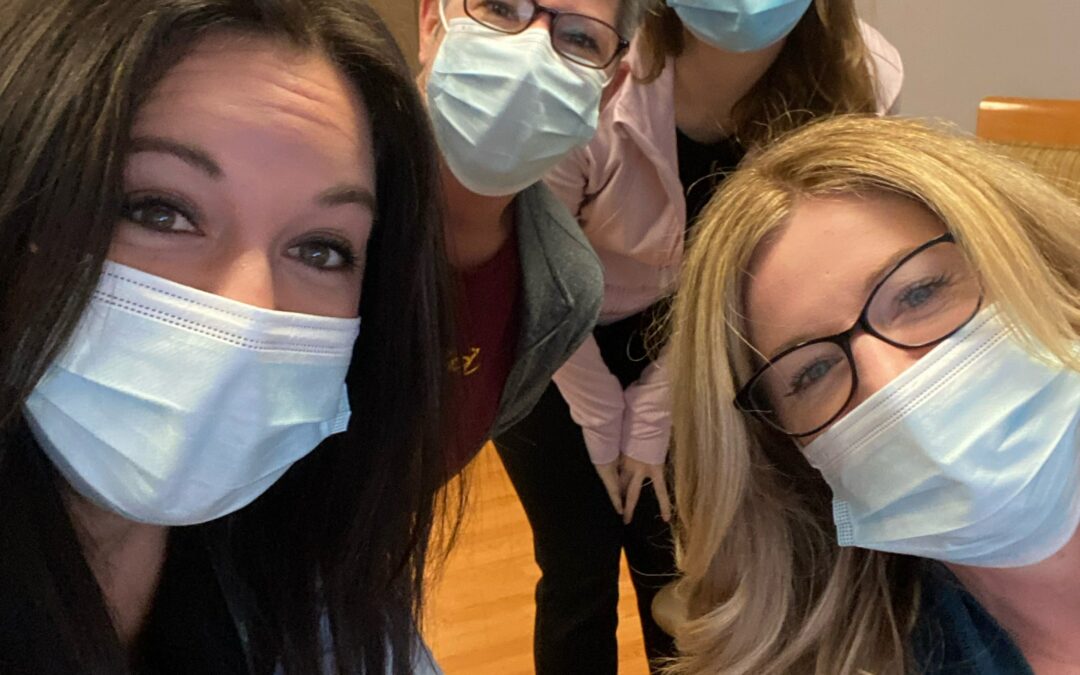
by Odom Rehab | Mar 9, 2022 | News
It was as surreal as it was powerful when I realized what was happening in the room around me, what had been happening in that room for the months leading up to this moment. The instant I recognized a confluence of events, questions and actions as one singular phenomenon, I found myself holding back the emotion that emerges when one bears witness to something truly remarkable. Something beautiful. I was proud to be in that room with the leaders of this company. I was excited, but I will also share, that I was nervous as I knew that once I stated what had just become clear to me, a mission would present itself to us all and there would be no turning back.
You see, I was here at Odom Rehab before Odom Rehab existed. Although it’s been almost 12 years, I remember my first phone call with Dr. John Odom vividly. Neither of us are short on passion or enthusiasm and we fed off one another. For more than a year we met on the weekends at his house putting together what could pass for a clinical business model, a value proposition, but more importantly, a dream and a vision. That dream was to not just accomplish two goals simultaneously but to create a paradigm shift in an industry. The first goal was to to deliver Physical, Occupational and Speech Therapy services to seniors in a way that reflected what we would want for our parents or our grandparents. Proactive, TRULY patient-centered care with the value of relationships and outcomes taking precedent over administrative standards. I am proud to say that we are excelling at this goal but that is not what this post is about.
The second goal was to change what it meant to be a Physical, Occupational or Speech Therapist in the field of geriatric rehab. At the time of that first call with Dr. Odom I was working in a transitional care unit. We had a great team, a great direct supervisor, but it didn’t take long for me to take note of something that disappointed me. I couldn’t help but feel that all the talented people around me who had dedicated huge amounts of time and money to their education and continuously refining their craft were working on an assembly line. Make no mistake, we were doing good work and improving lives but too often what was deemed good for business was at odds with what was good for therapists or patients. I was an idealist; to be honest I’m still an idealist. When presented with a “this or that” scenario my answer is almost always, “Ok let’s do both.” I was also high on confidence and probably a little low on competence but all of these factors forced me to take the leap of faith that more than a decade later led to the conversation in that room on that day.
Every month our leadership team meets in the same room to discuss the overall operations of our company. We had not just survived, but actually grown our company during the peak of a pandemic. More importantly, much more importantly, we had grown in our understanding of what’s important, and subsequently our understanding of the responsibility we hold as leaders. That understanding fueled the questions that led to my realization.
Questions including: How do we make sure our team feels completely supported in their own goals? How do we make our team KNOW without a doubt that we have their back? How do we prove that those of us in positions of leadership work for the therapists and not the other way around? Finally, I realized what was really being asked and so I spoke:
“What you are really asking can be distilled down into just one question. One very simple yet very BIG question. How do we make Odom Rehab THE BEST PLACE IN THE WORLD TO BE A THERAPIST?”
I was moved to say the least. To be in a room with the brightest and most passionate people with whom I have ever worked, who were asking this question, may be the highpoint of my professional life. With the context of being present for the origins of this company, I recognized that being in a position to ask this and dedicate ourselves to finding the answer is a milestone many organizations never eclipse. I will humbly say that every goal at Odom Rehab we have set out to accomplish we have achieved but I will also say with the confidence of my younger self, mark my words, this goal will be no different. That day we left the room unified around a singular mission: to make this THE BEST PLACE IN THE WORLD TO BE A THERAPIST.
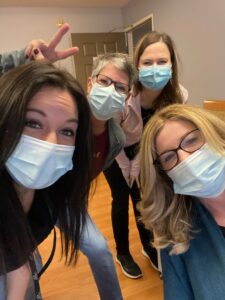
One of the many Odom Rehab dream teams!
Everyone in a leadership position at Odom Rehab has been a therapist. This has always been the case and it always will be the case. They have been with us since the beginning, done the hardest jobs and the beauty is that they still do. Not because they have to but because they want to. It’s baked into their being and the byproduct of this invaluable characteristic is the emergence of a goal like the one described above. This companies’ trajectory has been steep and it’s getting steeper. I am proud to say that our turnover is next to nothing. We didn’t coin the phrase “Hire ‘em and retire ‘em,” but it is a mantra we recite.
If we are going to meet the demands of the road ahead, of the industry in which we operate, the patients whom we serve, and the goal of making this THE BEST PLACE IN THE WORLD TO BE A THERAPIST, we need the best PTs, OTs and SLPs in the world to join us. To help us achieve what our team now knows to be possible. If any of this resonates or you’d like to hear more or you know you want to be a part of this mission, I’d like to talk to you personally. Send me a message and we’ll connect as speaking with those who want to join us for what will likely be the most exciting chapter in this company’s story is my top priority.
-Andy
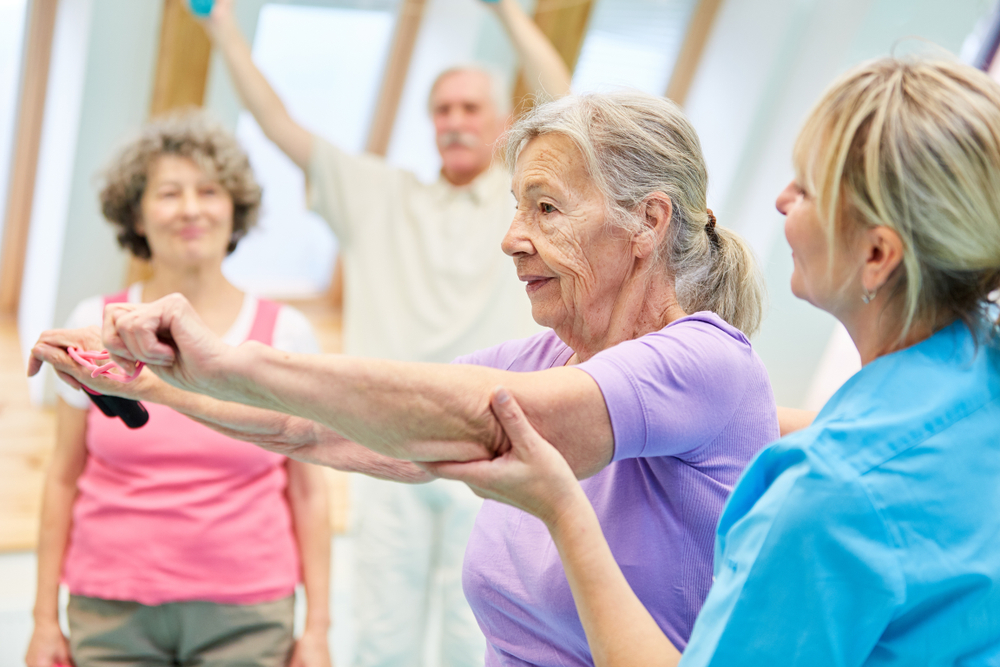
by Odom Rehab | Feb 22, 2022 | News
Connie was doing pretty well for somebody in her 80s. She lived in a gorgeous senior living community where she had friends, food she liked and card games she enjoyed. Sure she had trouble getting up from her chair, and she shuffled a little more than she used to. Then she had a fall. In an instant, her world changed.
This all could have been prevented. Even though there was a physical therapy department in her building, like many seniors, Connie thought it was for people who had a real problem or had already taken a fall.
A recent study by the Academy of Geriatric Physical Therapy (APTA) titled Older Adults’ Perceptions Regarding the Role of Physical Therapists in Fall Prevention: A Qualitative Investigation (Journal of Geriatr Physical Therapy, March 23, 2021) tries to find out why people don’t use therapy when it’s available to them. The researchers observe that while evidence-based interventions are available to prevent falls, older adults’ interest in reducing their likelihood of falling is less than expected. And, even more surprising to me, few older adults take steps to reduce fall risk even after they have a fall.
The research revealed that seniors not joining a fall prevention program didn’t see the need – for two very different reasons. Half thought they didn’t need the help. Part of their rationale for thinking this is based on how seniors have different definitions of what successful aging and independence looks like, and I’ll discuss this more in future posts. The other half that didn’t join the program thought they were beyond help.
Based on this research it’s clear that the PT/OT community is not doing enough to educate seniors and their loved ones about the importance and availability of falls prevention. A robust effort is required by Odom and our peers to make this issue front and center because the problem is only growing in scale.
The importance of falls prevention can’t be overstated. Falls not only impact the well-being of seniors, but are also a tremendous cost burden. Research in the report The CDC Injury Center’s Response to the Growing Public Health Problem of Falls Among Older Adults (American Journal of Lifestyle Medicine, February 20, 2015) shows the importance of more aggressive efforts in falls prevention. The number of older adult fatal falls is projected to reach 100,000 per year by 2030 with an associated cost of $100 billion. By incorporating falls prevention measures, physicians can reduce future falls by nearly 25%.
I think it’s important to expand the partnerships between therapy groups and organizations directly serving seniors at home or in long-term care. We need to ensure that there is an understanding by not only the residents of seniors housing communities, but all those involved in their care, that Falling is NOT a normal part of aging. We need to introduce a comprehensive educational component about therapy and falls prevention, and make it available to anyone.

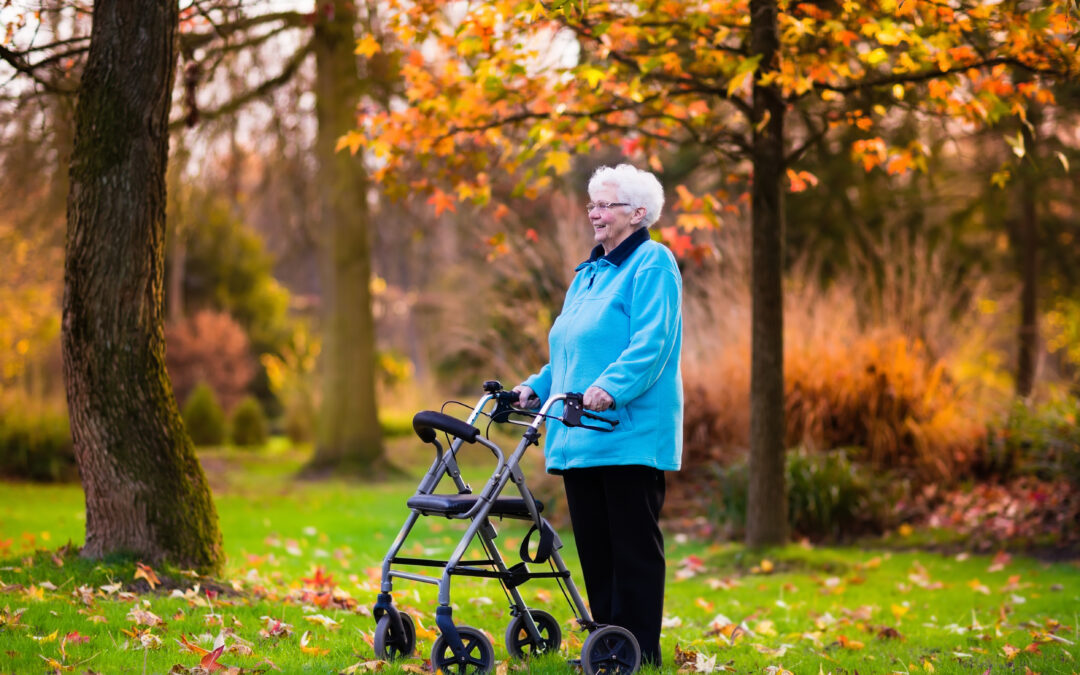
by Odom Rehab | Jan 5, 2022 | News
One of the most gratifying parts of my job is seeing seniors become more independent when they work with our therapists. But the benefits go beyond our patients who live in senior living settings, because having more independent senior living residents means fewer demands on caregivers. During this time when finding quality caregivers is so challenging, we believe an alternative is to reduce the acuity of residents and, as a result, reduce the number of caregivers needed each shift.
In the senior living settings where our services are available, residents who take advantage of our programs see an impressive increase in independence with both transfers and ADLs. We recently published a report examining the outcomes achieved through therapy services in IL,AL and MC populations. The results were an impressive 31.6% improvement in independence with transfers and a 19.6% in improvement in independence with ADLs. These outcomes were quantified by studying the Barthel Index and other clinically reliable tools incorporated into therapy evaluations, treatments and discharges
The Barthel Scale/Index (BI) may be one of the most important metrics a senior living provider should be familiar with, but often is not. It’s an ordinal scale used to measure performance in activities of daily living (ADL). Ten variables describing ADL and mobility are scored, a higher number being a reflection of greater ability to function independently. Time taken and physical assistance required to perform each item are used in determining the assigned value of each item. The Barthel Index measures the degree of assistance required by an individual on 10 items of mobility and self care ADL.
The BI combines a self-report by the resident and direct observation by the therapist.
The 10 personal activities included in the BI are: feeding, personal toileting, bathing, dressing and undressing, getting on and off a toilet, controlling bladder, controlling bowel, moving from wheelchair to bed and returning, walking on level surface (or propelling a wheelchair if unable to walk) and ascending and descending stairs.
The BI is considered a very reliable test to administer. Five studies of the MBI reported excellent internal consistency: one study of the MBI reported excellent test-retest reliability; one study of the MBI and 4 studies of BI reported excellent inter-rater reliability; and 1 study of the BI reported adequate inter-rater reliability.
As a predictive tool the the MBI predicted instrumental ADL performance at 6-months post-stroke: likelihood a patient will regain continence following stroke; risk for falls in patients with stroke; functional recovery following stroke; and acute care hospital length following stroke.
In conclusion, we feel the Barthel Index is an essential tool when we partner with senior living providers. It lets us monitor and adjust the effectiveness of our therapy for achieving greater independence for the seniors we help, and reducing staffing demands for caregivers at the residence.

by Odom Rehab | Dec 9, 2021 | News
The impact COVID-19 has had on the labor force seems to be in headlines everywhere. What’s not making headlines, however, is that the workforce shortage was present long before the pandemic—especially within the senior living industry. Luckily, there are ways to combat the harmful results of this ongoing “Sansdemic” for those in the senior care industry.
What Does “Sansdemic” Mean and Why is it Happening?
According to EMSI, the labor shortage occurring in the U.S. is the beginning phase of a great “sansdemic.” Sansdemic simply means “without people,” which is exactly what many businesses and industries are experiencing. EMSI listed three main reasons for the labor shortage:
- Baby boomers are leaving the workforce
- Record-low labor force participation rate (LFPR) of prime age Americans
- The lowest birth rates in U.S. history
How is the Sansdemic Impacting the Senior Care Industry?
The long-term care and senior housing industries are well aware of the impact from these labor trends:
In a survey by Senior Housing News, it showed that 81% of assisted living reported facing recent staff shortages. Of those operators, 34% felt as though staffing had gotten “somewhat worse” compared to 2020; 25% felt as though staffing was “much worse” than a year prior.
In another survey from the American Health Care Association and National Center for Assisted Living, an additional problem was highlighted due to worker shortages:
They found almost every respondent had to ask their current staff to work overtime or to pick up extra shifts to meet their facility’s needs. In addition, 69% of nursing homes and 38% of assisted living facilities have hired agency staff to fill the gaps.
What Can Senior Living Facilities Do to Succeed During the Sansdemic and Beyond?
How do senior living facilities not only stay open, but succeed and thrive during the sansdemic? At ODOM Rehab, we work with our senior living partners and clients every single day, so we’ve compiled a few tips:
1. Reduce Demands for Caregiver Hours by Improving Independence of Residents
At ODOM, we’ve found that working with residents on physical and occupational therapies increases their strength, balance, and as a result, their independence. By reducing the acuity of the residents, the senior housing partners we work with are often able to reduce their staffing hours, therefore, reducing the number of caregivers they need to recruit.
2. Recruit Beyond Traditional Age Demographics
The meaning of “working age” has changed as health and longevity in humans improve. Work expertise continues to peak beyond age 65 and businesses should adjust their outlook accordingly.
Older adults bring experience, insight, and value in ways that a young employee often can’t. Hiring older workers helps prevent talent gaps; plus, what’s a better way for senior living facilities to demonstrate that seniors are capable of so much more than society often gives them credit for, than by hiring them?
Valuing employees may sound like an obvious thing to do… However, a company that truly values its employees and customers is rarer than it should be, unfortunately. On a purely economic level, people are a resource that shouldn’t be taken for granted. Retention is crucial, and that’s becoming even more obvious in the midst of this Sansdemic. People are the key ingredient to success… So, treat them like it!
Despite the Labor Shortage, Your Senior Living Facility Can Flourish with ODOM Rehab
If your senior living facility or long-term care facility needs assistance as the Sansdemic lives on, get in touch with the experts at ODOM Rehab. By improving the health of your residents and supporting your internal team, we can help take some of the stress off your shoulders. Get in touch with us today to learn more!









